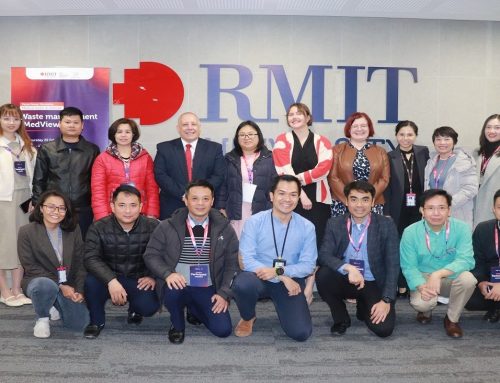15.7.2021
By Dr. Motjaba Salem
The HUMLOG Institute’s Board Award Doctoral Honorary mention 2021.
During 2020-2021, multiple waves of the infectious Coronavirus stormed across Europe, Asia, Latin American, and Africa as the government authorities and aid workers scrambled to contain the outbreak. In parallel, conflicts across the world have forcibly displaced millions from their homes. The displacement statistics are soaring: by end of 2020, 20.7 million were refugees, 4.1 million were asylum-seekers, and 48 million were internally displaced people according to the UNHCR. As these ongoing examples illustrate, humanitarian organizations simultaneously face complex challenges, and this trend strains resources to a breaking point.
This leads many of us to wonder: What should be done to make aid delivery more effective and efficient? The answer lies in a large pool of anecdotes and personal experiences of those closely involved in delivering aid. This pool provides us academics with a new and less explored context wherein problems can be addressed with tools and models, which scholars are familiar with and deem to have a higher potential for publications in top tier journals.
However, aid workers often tend to dismiss research findings because they usually offer little practical use for their problems. I believe the onus is on the academia to make a strong case for the use of research-based solutions in the humanitarian sector. This will happen when our proposed solutions are contextualized, generalizable, and address the problems that really matter in the sector. To make an impact, we should venture beyond our intellectual ivory towers and seriously take time to consider and understand the real-life experiences of aid workers in all their complexity and richness. Going forward, this means we should abandon the habit of solving abstract problems without collecting actual data. In my doctoral dissertation, I have used empirical survey methods to make the research problems and findings more relevant to the practice. This required establishing close interactions with aid workers, receiving their feedback (e.g., I presented research in practitioner conferences and workshops in Kenya and Germany), and spending time on the ground with them (e.g., I visited field coordinators in Serbia and Hungary during the refugee crisis). Researchers should build partnerships with humanitarian organizations to help them evaluate their operations in exchange for getting access to their available datasets and staff, so that they can conduct interviews, surveys, or experiments.
For example, I surveyed hundreds of field-level aid workers in countries like Afghanistan and similar crisis-stricken contexts. The evidence I found point to interesting behavioral dynamics inside humanitarian aid field offices. Despite belonging to one field office, aid workers usually have distinct social identities, different perceptions of their group relations, and unequal levels of motivations. It is common for field office leadership to come from abroad, mainly from Global North countries, with little knowledge about the local geography, culture, and people. Ironically, they have much more decision-making authority than their local colleagues, who are the preferred choice for any assistant positions—often without a promising career path into the leadership jobs. Expatriates usually earn more than locals and receive a range of benefits (e.g., paid leave, accommodation, health insurance, etc.) that the locals with similar job titles would never be eligible for. Above all, local and expatriate aid workers have culturally distinct backgrounds, leading them to hang out separately and cluster in independent silos inside their field offices.
Taken together, these differences hinder collaboration as inequality becomes the most visible and embodied feature of relations among local and expatriate colleagues in field offices. This is a challenge with serious operational implications. Whenever a disaster strikes, aid workers in various jobs (e.g., expatriate field office managers, logisticians, local staff) are required to collaborate to use scarce resources at hand for the purpose of helping the people in need. Much of learning and creativity happen on the job through collaboration of local and expatriate aid workers. Similarly, improvements in operational performance critically depend on cooperative intergroup relations inside field offices.
The findings of my doctoral dissertation point to the proactive role of field office leadership as a key instrument to address this challenge. If leaders recognize the silos in their field office and go the extra mile to bridge the invisible social distance, collaboration can be created despite the animosity that might exist between local and expatriate subgroups. For example, leaders should interact in an equal manner with expatriates and locals and offer them equitable opportunities for asking questions, giving feedback, and discussing errors. The key here is to involve locals and recognize their contributions. It seems common in meetings for expatriates to speak freely, whereas local aid workers rarely say a word unless directly asked. Leaders should proactively ask for the opinions of locals to create sufficient psychological safety for them to freely voice their ideas in operational meetings. Another effective behavior for leaders is to coordinate specific peer‐to‐peer interactions at work. This is especially relevant in case of position handover to newcomers, or when an expatriate has a learning need that can be fulfilled by a local aid worker and vice versa. However, field office leaders should avoid playing the role of a strong-man leader who always tells people what to do and how to behave. Field office leadership traditionally adopts an authoritarian style to facilitate aid workers’ adaptability and help them delver a better job performance in humanitarian operations. But I find that there is mixed feedback on the efficacy of authoritarian style during humanitarian operations.
Surprisingly, it appears that the mainstream research on humanitarian operations still pays little attention to the impact of organizational behaviors on the quality of operational processes. It is surprising because people are involved in humanitarian operations and thus studying their behaviors is logically relevant. The good news is that a small yet growing number of scholars have over the recent years started to provide novel insights on the role of softer behavioral issues such as information diffusion and inter-organizational collaboration. Such studies have given the research on behavioral humanitarian operations a promising momentum. In this light, my doctoral dissertation (see here and here) drew on organizational behavior theorizing to identify and test the processes and conditions under which field offices leadership is associated with improved outcomes in humanitarian operations. Therefore, my research has positioned leadership theorizing as one of the key avenues for meaningfully expanding humanitarian operations’ theoretical scope, thus helping this relatively young domain to address relevant and pressing behavioral problems.
In this endeavor, collecting actual data will open up the door to study problems that have been so far neglected and unexplored. This also entails the extant research on humanitarian operations to move beyond the immediate focus on traditional logistics and take a multidisciplinary focus. Indeed, if researchers aspire to address aid workers’ need, their theorization should be able to reflect the complexities of humanitarian operations settings. For example, leadership has been at the top of agendas for aid workers, and donors have over the last decade increased their funding to improve leadership capacity in the sector. However, the research largely neglected this trend, and thus the challenge of leadership received minimal investigation prior to my doctoral dissertation.
Similarly, donors promote the localization of humanitarian operations through local capacity building initiatives. This trend reflects the reality that the size of the field personnel has increased from 450,000 in 2013 to over 570,000 people in 2017, with local aid workers always being the numerical majority. Yet relatively few data-driven research studies took the much-needed look at the behaviors and actions that make local capacity building successful. Trends such as leadership and local capacity building highlight the essential role of the people, but the ‘people factor’ receives little attention in the humanitarian operations research largely because it involves the tedious process of combining different streams of research and collecting messy data from practitioners. However, if this challenge is taken up, I believe the behavioral angle offers numerous opportunities to improve current knowledge, thus helping the humanitarian operations literature mature—to the benefit of those who work in it and those whose lives are assisted by it.
Dr. Mojtaba Salem is as a postdoctoral researcher at the Chair of Research and Science Management in Technical University of Munich. He is also head of projects at Research Institute for Leadership and Operations in Humanitarian Aid (RILOHA).




